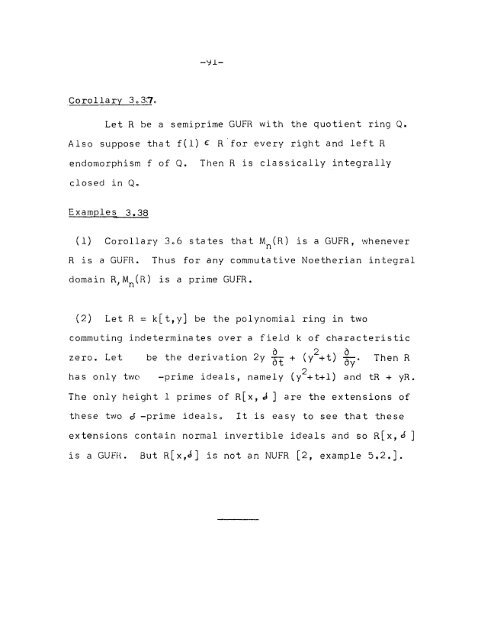Studies in Rings generalised Unique Factorisation Rings
Studies in Rings generalised Unique Factorisation Rings
Studies in Rings generalised Unique Factorisation Rings
You also want an ePaper? Increase the reach of your titles
YUMPU automatically turns print PDFs into web optimized ePapers that Google loves.
Corollary 30370<br />
Let R be a semiprime GUFR with the quotient r<strong>in</strong>g Q.<br />
Also suppose that f(l) £<br />
R'for every right and left R<br />
endomorphism f of Q. Then R is classically <strong>in</strong>tegrally<br />
closed <strong>in</strong> Qo<br />
Examples 3.38<br />
( 1) Corollary 306 states that M (R) is a GUFR, whenever<br />
n<br />
R is a GUFR. Thus for any commutative Noetherian <strong>in</strong>tegral<br />
doma<strong>in</strong> RJMn(R)<br />
is a prime GUFR.<br />
(2) Let R = k[t,y] be the polynomial r<strong>in</strong>g <strong>in</strong> two<br />
commut<strong>in</strong>g <strong>in</strong>determ<strong>in</strong>ates over a field k of characteristic<br />
zero. Let be the derivation 2y ~t + (y2+t) ~y. Then R<br />
has only two -prime ideals, namely (y2+ t+l) and tR + yR.<br />
The only height 1 primes of R[x, J ] are the extensions of<br />
these two d -prime ideals o It is easy to see that these<br />
extensions conta<strong>in</strong> normal <strong>in</strong>vertible Ldea Ls and so R[x, cl ]<br />
is a GUFf{. But R[x,J] is not an NUFR [2, example 5 02.].
















